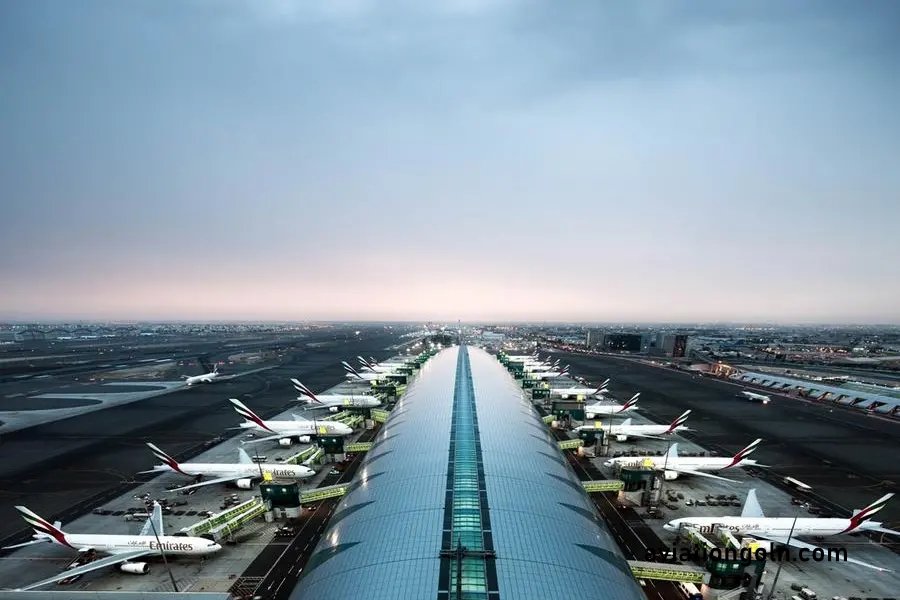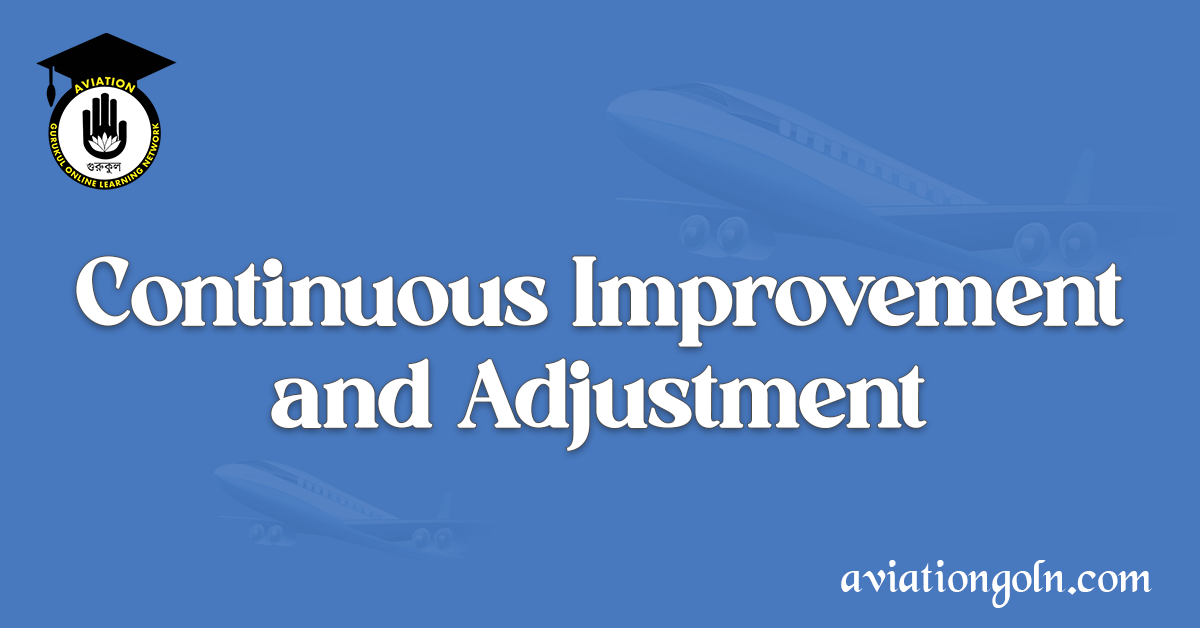Continuous Improvement and Adjustment: In a world where travel has become a norm and airports are bustling centers of activity, the need for continuous improvement and strategic planning in airport operations has never been more critical. With constant advances in technology, evolving security concerns, and the ever-increasing demand for efficiency, airports must be in a perpetual state of adaptation and growth. This paper delves into the intricacies of implementing and evaluating a strategic plan for airports with a focus on continuous improvement and adjustment.
Continuous Improvement and Adjustment: Implementation and Evaluation of Strategic Plan for Airport

The Importance of Continuous Improvement in the Aviation Sector
Continuous improvement, often tied to the Japanese concept of “Kaizen”, revolves around the idea of constantly making small, incremental changes that sum up to significant benefits over time. In the aviation sector:
- Safety: With millions of passengers using airports daily, safety is paramount. Continual improvements in this sector can reduce accidents, security breaches, and other potential hazards.
- Efficiency: Efficient operations translate to shorter waiting times, swift security checks, and faster baggage delivery.
- Customer Satisfaction: A positive airport experience can significantly influence a traveler’s overall journey. Continuous improvement ensures that customers’ evolving needs and expectations are consistently met.
- Cost-Efficiency: Streamlining operations and processes often leads to cost savings in the long run, which can be passed on to consumers or reinvested into the airport.
Implementing a Strategic Plan for Continuous Improvement
1. Situation Analysis
Before implementing any strategic plan, it’s crucial to understand the current position of the airport. This involves:
- SWOT Analysis: Identify the strengths, weaknesses, opportunities, and threats the airport currently faces.
- Benchmarking: Compare the airport’s operations, services, and performance metrics against other leading airports or industry standards.
2. Define Objectives
Objectives should be specific, measurable, achievable, relevant, and time-bound (SMART). For instance, an objective might be, “Reduce average security check times by 15% over the next 12 months.”
3. Formulate Strategies
With objectives in place, it’s time to decide on the strategies to achieve them. For instance, to achieve the aforementioned objective, the airport might:
- Invest in newer, faster security screening technology.
- Train personnel in rapid yet thorough screening processes.
4. Plan Implementation
Detailed action plans, timelines, and responsibility allocations ensure that strategies are put into motion systematically. For instance:
- Jan-March: Research and procure new security screening technology.
- April-June: Train personnel on new systems.
- July-Sept: Implement new systems and initiate public awareness campaigns.
- Oct-Dec: Review and adjust based on initial results.

5. Resource Allocation
Ensure the necessary resources (funds, personnel, technology) are available and appropriately allocated to different aspects of the strategic plan.
Evaluation of the Strategic Plan
Once the strategic plan is in motion, ongoing evaluation is crucial for gauging its effectiveness and making necessary adjustments.
1. Key Performance Indicators (KPIs)
Identify metrics that align with the objectives. For our earlier objective, a KPI might be the “Average Time Per Passenger at Security Checkpoints”.
2. Regular Monitoring
Set intervals (monthly, quarterly, yearly) to review the progress towards achieving objectives. This is where tools like dashboard analytics can provide real-time insights into operational performance.

3. Feedback Mechanisms
Establish channels through which employees and passengers can provide feedback. This can include:
- Suggestion boxes at airport terminals.
- Online surveys sent to passengers.
- Regular town-hall meetings with airport staff.
4. Adjust and Adapt
No plan is perfect. Regular evaluations will highlight areas where the airport might be lagging or where new challenges have emerged. The strategic plan should be flexible enough to adapt to these changes. If security check times aren’t reducing as planned, delve into the reasons why. Maybe the new technology isn’t as efficient as anticipated, or perhaps staff training wasn’t comprehensive enough.
5. Celebrate Wins and Learn from Losses
Recognize and celebrate when objectives are met or exceeded. This can boost morale and motivate all stakeholders to keep pushing for improvement. Conversely, don’t be disheartened by shortcomings. Use them as learning opportunities.

Case Study: Changi Airport
Singapore’s Changi Airport, frequently lauded as the world’s best airport, offers a great example of continuous improvement. Despite its top rankings, Changi constantly seeks ways to enhance the passenger experience.
One of its initiatives was the introduction of the ‘Changi Experience Agent’ program. These agents, equipped with tablets, roam the terminals to assist passengers directly, reducing the need for them to queue at information desks.
Another improvement involved the baggage claim process. Through efficient systems and regular monitoring, Changi boasts that 90% of travelers receive their checked luggage within 12 minutes of arriving at the baggage claim area.

Airports, as critical nodes in the global travel network, have a responsibility to ensure their operations are safe, efficient, and customer-centric. Continuous improvement isn’t just a buzzword; it’s a necessity in the fast-paced world of aviation. By strategically planning for improvement, regularly evaluating progress, and being ready to adapt, airports can ensure they not only meet but exceed the expectations of all stakeholders involved.
Remember, in the world of aviation, standing still is moving backward. In the words of Henry Ford, “If you always do what you’ve always done, you’ll always get what you’ve always got.” Continuous improvement and strategic planning ensure airports are always moving forward, setting new benchmarks, and redefining excellence in the aviation sector.
